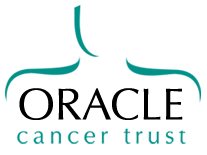Dietitian Sarah Ballis writes on health and lifestyle for patients
Head and Neck Survivorship: dietary and lifestyle measures to prevent disease
Head and neck cancers are still considered to be rare and complex to treat. Like many types of cancer, the incidence of head and neck cancer is on the rise with a rapid increase in diagnoses observed over the past three decades. The rate of increase in incidence (approximately 30%) has been higher in women than in men, with the most common sites of head and neck tumours being the larynx, followed by tonsil and then base of tongue. Just under 11,500 people in the United Kingdom are diagnosed with a head and neck cancer each year which, as a proportion of the 350,000 new cancer cases nationally, accounts for about 3% of all cases.
In the UK, there are around 2.5 million people currently who have had a diagnosis of cancer. Earlier detection alongside improvements in surgical and radiotherapy techniques, better targeted chemotherapies and scientific advancements like immune therapy, have profoundly improved survival, such that people are living longer after cancer than ever before.
Survivorship
In recent years, the term survivorship has been accepted as a description of the experience and common issues regarding the health and life of a person with cancer throughout the continuum of care. That is from diagnosis to treatment, into remission and beyond through the rest of their life. This term survivorship encourages mindfulness of life beyond cancer and encourages clinicians to implement cancer preventing diet and lifestyle strategies as soon as possible, to minimise and mitigate long-term and late side-effects and other health conditions. This is particularly important to the head and neck group who experience significant effects from their disease and treatment. They may experience long-term physical effects like dry mouth, swallowing disorders, shoulder dysfunction, jaw and throat tightness and also feel uncertainty about the future, have a fear of the cancer coming back, experience post-treatment anxiety, social challenges or financial hardship. They are at higher risk of further malignancies and may be faced with late side-effects presenting many years after treatment, including restricted jaw opening, hearing loss, bone disease, diabetes, osteoporosis, blood vessel narrowing or lung fibrosis. More than 60% of people treated for head and neck cancer are alive 10 years after treatment.
Head and neck cancer risk factors
Over 90% of head and neck cancers may be driven by major lifestyle risk factors, and conversely, may be prevented through healthier lifestyle practices. Evidence is still emerging, but what we do understand so far is that drinking excessive amounts of alcohol (30% cases), smoking cigarettes (75% cases) or marijuana, and exposure to the human papillomavirus (HPV) can lead to cancer in the mouth, oropharynx, throat or voice box. In some cases, chewing betel nuts or paan can cause mouth cancer. New interest is focussing around the possibility that over half of cases of head and neck cancer in the UK may be associated with eating too few fruit and vegetables.
Highlighting the lifestyle factors at play in the development cancer is never intended to imply blame or guilt on survivors, but rather encourages evidence-based guidance about positive lifestyle change to be offered by professionals when the majority of patients still seek information from the media and online.
Reducing new and recurrent cancers
Having had a diagnosis of head and neck cancer increases the risk of another head and neck cancer by as much as 16%. 23% of head and neck survivors will go on to develop a non-head and neck related primary cancer like oesophagus or lung probably due to the shared lifestyle and environmental risk factors which lead to the initial disease.
It is not uncommon to develop a mouth cancer some years after treatment for an oesophageal squamous cell carcinoma, lung cancer or cervical cancer. The risk of larynx cancer is also much more common in survivors of lung, oesophageal, bladder and cervical cancers. People who continue to drink alcohol after upper aerodigestive tract cancer treatment have a 2.2 times greater risk of mouth, pharynx and larynx cancer, with the least risk in people who drink the least alcohol.
Reducing the risk of recurrent cancer and preventing new cases requires implementation of the same lifestyle measures. Both nutrition and physical activity have important roles to play and, while there are many fear factors promoted by commercial enterprises like organic farmers, vitamin and mineral suppliers and alternative health practitioners, there are some key evidence-based dietary and lifestyle factors that are proven to impart significant cancer protective effects which will be discussed below.
Smoking cessation
Smoking is the main avoidable risk factor for head and neck cancer and the leading cause of HPV negative disease. Tobacco smoking is classified by the International Agency for Research on Cancer (IARC) as a definite cause of mouth, nasopharynx and throat cancers. More than 65% of oral cancers and 79% of laryngeal cancers are caused by smoking.
It is the combination of tobacco with alcohol which appears to carry the highest risk when it comes to head and neck cancer, with risk almost tripled in alcohol drinkers who smoke tobacco.
Around four years after stopping smoking head and neck cancer risk begins to decline. By 20 years an ex-smoker the risk of mouth and pharyngeal cancer reduces to that of a never smoker. The risk of laryngeal cancers however remains higher for a much longer period of time after quitting.
Increased fruit and vegetable intake
A diet high in fresh (not salted or pickled) fruit and non-starchy vegetables, especially containing carotenoids, has been described by the IARC as ‘probably protective against mouth cancer’. Carotenoids, such as beta-carotene, are antioxidants that give the orange and dark green colour to foods like carrots, sweet potatoes, berries, tomatoes, spinach and kale. In general, a mainly plant-based diet is thought to be strongly protective against overall cancer risk with increasing protective benefit from taking as many as ten portions or 800g of fruit and vegetables per day.
When chewing and swallowing difficulties remains an issue whole juicing (retaining the pulp) or blending fruits and vegetables into a puree is an acceptable alternative. This can add variety and may even improve the absorption of some nutrients.
Frozen foods are also useful and highly nutritious when fresh fruit and vegetables are not available. These are often picked ripe and quickly frozen retaining a high nutritional content.
Modified meat intake
Following a diet high in processed meat, such as sausages, bacon, and luncheon meats carries a higher risk of larynx cancer. Larynx cancers also appear to be more common in people consuming a high fat diet. Red meats that have been processed and salt cured have been under the spotlight for some in relation to their link with cancers of the colon. Keeping these foods to a minimum and limiting overall red meat intake to one portion per week is advisable. Fish, chicken, soy, lentils, chickpeas and nuts are all suitable high protein alternatives to be eaten often. Choosing cooking methods which avoid the need for high temperature cooking and charring is also advisable.
Minimal to no alcohol intake
Many studies have found a link between alcohol and seven types of cancer: mouth, pharynx, larynx, oesophagus, liver, breast and colon. People who drink 50g of ethanol per day (around 3 standard drinks) have a 2-3 fold increased risk of head and neck cancer compared to non-drinkers. The IARC lists alcohol as a cause of tumours in the mouth, pharynx and larynx. The American Cancer Society says there is a ‘substantial’ risk of developing second primary head and neck cancers in people who continue to drink alcohol after treatment.
The UK Department of Health released new advice in 2016 which suggests that there is actually no safe level of alcohol intake. In order to achieve a state of ‘low risk drinking’, men and women alike should consume no more than 14 units of alcohol per week.
Regular physical activity
The American Cancer Society advises that people should avoid inactivity and return to normal activity as soon as possible after a diagnosis of cancer. This includes during cancer treatment. At least 20 prospective observational studies have shown that physically active cancer survivors have an overall lower risk of cancer recurrences and improved survival compared to those who are inactive. Oral and pharyngeal cancer risk is up to 40% lower in people who do moderate to high levels of physical activity, especially men. The evidence-based recommendation is to engage in 150 minutes of moderate exercise or 75 minutes of vigorous exercise each week, plus strength training twice per week.
Avoiding overweight and obesity
Being overweight appears to have no effect on incidence or recurrence rates of head and neck cancers. However, being overweight is associated with a number of other cancer types including colon and oesophageal cancer. Maintaining a body mass index of less than 28 kg/m2 is strongly associated with improved health and weight loss of between 5% and 10% body weight in overweight individuals can have profound health benefits.
In summary, minimizing alcohol, avoiding tobacco and following a diet high in fruit and vegetables, low in processed meat and low in total fat is key to reducing cancer risk. When these dietary recommendations are adhered to alongside a lifestyle which incorporates daily walking, the risk of new or recurrent cancer is the lowest it can be.
References:
American Institute for Cancer Research (AICR) and World Cancer Research Fund (WCRF): Food, Nutrition, Physical Activity and the Prevention of Cancer: a global perspective. 2007. www.aicr.org
Arends J, Bachmann P, et al. ESPEN Guidelines on nutrition in cancer patients. Clinical Nutrition. 2017;36:11-48.
Beeken R, et al. That about diet? A qualitative study on cancer survivors views on diet and cancer and their sources of information. European J of Cancer Care. 2016; 25:774-783.
Cohen E, LaMonte S, et al. American Cancer Society head and neck cancer survivorship care guideline. Ca Cancer J Clin. 2016; 66:203-239.
Rock, C, et al. Nutrition and Physical Activity Guideline for Cancer Survivors. Ca Cancer J Clin. 2012; 62:242-274.
Talwar B, Donnelly R, et al. Nutritional Management in head and neck cancer: United Kingdom National Multidisciplinary Guidelines. The J of Laryng & Otol. 2016; 130 (supl S2):S32-S40.

Health promotion and delivering health improvement and education programmes is a key interest of Sarah’s and a vocation she continues to study at post-graduate level at The London School of Hygiene and Tropical Medicine via a Master of Public Health.
She is also establishing a consultancy called Sound Bites to offer personalised dietary and lifestyle advice pre- or post-cancer treatment. She can be contacted at sarahballis@hotmail.com
